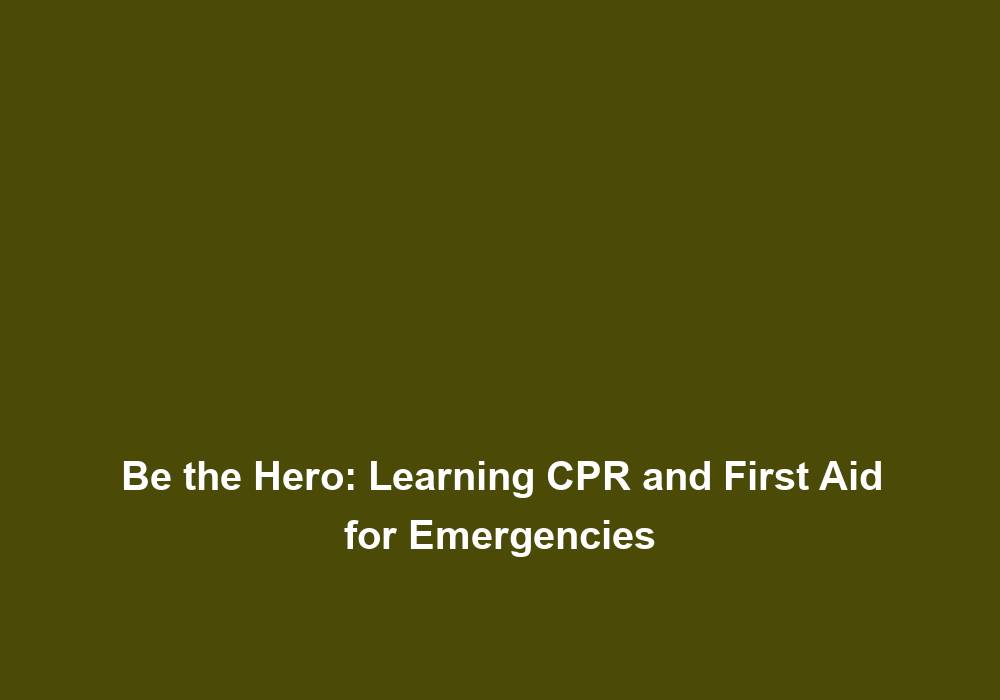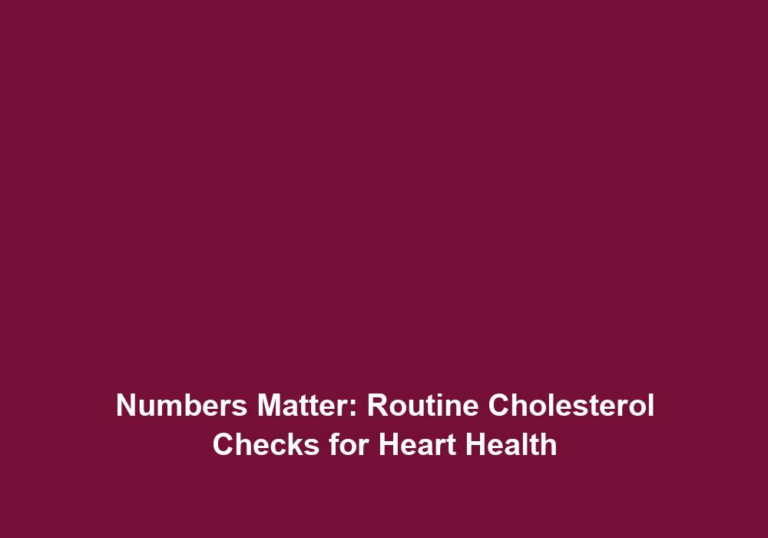Be the Hero: Learning CPR and First Aid for Emergencies
Emergencies can occur at any time, and being prepared to handle them can be a matter of life and death. In critical situations, knowing CPR (Cardiopulmonary Resuscitation) and First Aid can make you a hero by providing immediate assistance until professional help arrives. This comprehensive guide will walk you through the basics of CPR and First Aid, empowering you to be prepared and take action when it matters the most.
Why Learn CPR and First Aid?
-
Saving Lives: Learning CPR can equip you with the life-saving technique needed when someone’s heart has stopped beating. By performing CPR correctly, you can help maintain blood flow and oxygen to the vital organs until medical help arrives. On the other hand, First Aid involves providing initial care for injuries or illnesses before professional medical attention is available. By learning both CPR and First Aid, you increase the chances of saving lives in emergency situations.
-
Immediate Response: Emergencies can happen anywhere, whether at home, work, or in public places. By learning CPR and First Aid, you can respond immediately to an emergency situation, providing crucial support before paramedics arrive. Your quick actions can stabilize the situation and prevent further harm to the victim. This prompt response can significantly improve the chances of survival and recovery.
-
Empowering Others: Acquiring CPR and First Aid skills allows you to become a valuable resource in your community. You have the power to empower others by teaching them these life-saving techniques, ensuring that more people are prepared to handle emergencies. By sharing your knowledge, you contribute to popularizing the culture of safety and preparedness, creating a safer environment for everyone.
CPR: Cardiopulmonary Resuscitation
CPR is a technique used to revive a person whose heart has stopped beating. It involves a combination of chest compressions, rescue breaths, and in some cases, defibrillation. Here’s a breakdown of the steps involved in performing CPR:
-
Assess the Scene: Before starting CPR, it is crucial to ensure that the scene is safe for both you and the victim. Look for any potential hazards, such as fire or falling objects, and make sure the area is clear. Your safety is paramount, and you should only proceed if it is safe to do so.
-
Check Responsiveness: Approach the victim and gently tap their shoulder, asking if they are okay. Look for any signs of responsiveness, such as movement or moaning. If there is no response, it indicates that the victim needs immediate medical attention, and you should proceed with CPR.
-
Call for Help: If you are alone, call emergency services or ask someone nearby to do so. Time is of the essence in an emergency, and professional assistance is vital for the victim’s survival. If a defibrillator is available, ask someone to bring it to you while you initiate CPR.
-
Perform Chest Compressions: Proper chest compressions are essential for maintaining blood circulation. Place the heel of one hand on the center of the victim’s chest, slightly above the lower half of the breastbone. Place your other hand on top, interlacing the fingers. Position yourself directly over the victim’s chest, with your arms straight and elbows locked. Push hard and fast, compressing the chest at a rate of about 100-120 compressions per minute. It is crucial to allow the chest to fully recoil between compressions to maximize blood flow.
-
Provide Rescue Breaths: After 30 chest compressions, open the victim’s airway by tilting their head back and lifting their chin. Pinch their nose shut and cover their mouth with yours, making a tight seal. Give two rescue breaths, each lasting about a second, and watch for the chest to rise. Continue with cycles of 30 compressions and two breaths until help arrives or the victim shows signs of recovery.
-
Use a Defibrillator: If a defibrillator is available, follow the device’s voice prompts or visual instructions. Place the pads as indicated, ensuring no one is touching the victim, and press the shock button if advised. After delivering the shock, continue with CPR. Defibrillators are highly effective in restoring normal heart rhythms and should be used as soon as possible in cases of cardiac arrest.
Remember, CPR is a skill that requires practice to maintain proficiency. Consider taking a certified CPR training course to ensure you are up to date with the latest techniques and guidelines. Regular training can help boost your confidence and readiness to respond effectively in emergency situations.
First Aid Basics
In addition to CPR, having knowledge of First Aid can help you provide immediate care for injuries and illnesses. Here are some essential First Aid techniques:
-
Bleeding Control: In the event of bleeding, it is crucial to apply direct pressure to the wound using a clean cloth or your gloved hand. This pressure helps to stem the flow of blood and promotes clotting. Elevating the injured body part above the level of the heart can also help reduce bleeding. If bleeding is severe and direct pressure doesn’t stop it, apply a tourniquet above the injury site and ensure proper medical attention is sought.
-
Burns: When dealing with burns, it is important to act promptly. For minor burns, run cool water over the affected area for about 10-20 minutes. This helps to soothe the burn and prevent further damage. Avoid using ice or very cold water, as it can worsen the injury. Cover the burn with a sterile non-stick dressing or clean cloth to protect it from infection. Seek immediate medical assistance for severe burns or burns that cover a large area.
-
Choking: Choking can be a life-threatening situation that requires immediate action. If someone is choking, perform the Heimlich maneuver by standing behind the choking person, placing your hands just above their navel, and giving upward thrusts. This technique helps to dislodge the obstruction in the airway and restore normal breathing. If the person becomes unresponsive, start CPR immediately and continue until professional help arrives.
-
Fractures and Sprains: When faced with fractures or sprains, it is important to immobilize the injured area to prevent further damage. You can create a splint using rigid materials such as boards, folded newspapers, or rolled-up clothing to stabilize the injury. Applying ice packs wrapped in a cloth can help reduce swelling and alleviate pain. It is crucial to seek medical attention for proper diagnosis and treatment of fractures and sprains.
-
Seizures: During a seizure, it is important to ensure the safety of the person experiencing it. Clear the area around them to prevent injury from nearby objects. Cushion their head with a soft object to protect them from any potential harm. Loosen any tight clothing around their neck to facilitate breathing. It is important not to restrain the person or put anything in their mouth during a seizure. After the seizure, help them reposition to a safe and comfortable position to aid recovery.
Conclusion
Learning CPR and First Aid equips you with the skills and knowledge to be a hero in emergency situations. By providing immediate assistance until professional help arrives, you can potentially save lives and make a significant difference. Remember to regularly refresh your skills through training courses and stay updated on the latest techniques and guidelines. By being prepared, you can confidently face emergencies and be the hero someone desperately needs.







